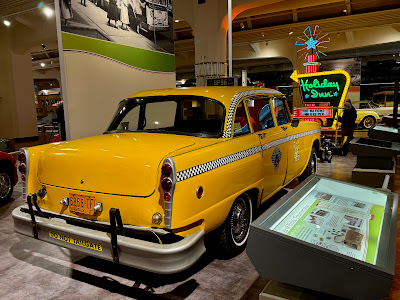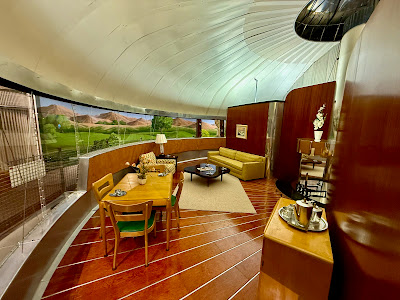I finally made it to the Henry Ford Museum of American Innovation, and it was well worth the trip. Spanning over 500,000 square feet, the museum is a tribute to the bold ideas and inventions that shaped America. From standing inside the bus where Rosa Parks refused to give up her seat to marveling at the Wright Brothers’ early flyer and JFK’s presidential limousine, every exhibit tells a powerful story. The Dymaxion House was a fascinating glimpse into a future that never quite happened. It’s a place where history comes alive—hands-on, thought-provoking, and deeply inspiring.
2016 Ford GT Clay Model
The GT’s small design team worked in a secret room in the basement of the Ford’s studio. Managing air flow through and around the vehicle guided much of the team’s work. Drag - wind resistance pushing against a car - slows it down. But down force - air pressure pushing down on a car - increases its grip on the track. Designers gave the GT a streamlined body to reduce drag and special ducts and an adjustable rear wing to improve downforce
1906 Locomobile “Old 16”
“Old 16” was the first American car to win the Vanderbilt Cup, breaking European dominance in 1908. Built like a locomotive on wheels, it packed a massive 16.2-liter engine that produced 90 horsepower, and roared down Long Island roads at over 60 mph. Its exposed mechanics, chain drive, and raw power reflect the brutal, thrilling world of early motor racing. Driven by George Robertson, it became a symbol of early American racing courage and craftsmanship—raw, loud, and built to last.
The Golden Arrow was a sleek, purpose-built land speed record car designed in Britain to reclaim the world title from the United States. In March 1929, legendary driver Henry Segrave piloted the car to a stunning 231.45 mph on the sands of Daytona Beach—shattering the previous record by 24 mph. With its striking aerodynamic design and powerful Napier Lion engine, Golden Arrow symbolized British engineering ambition at the height of the interwar speed race.
An early tire designer’s attempt to create a tire rugged enough to
withstand the harsh, unpaved country roads of early America.
Dymaxion House
Designed by visionary inventor Buckminster Fuller in the 1940s, the Dymaxion House was a bold reimagining of the American home—lightweight, affordable, and energy-efficient. Fuller originally estimated its cost at around $1,500 in the 1940s—roughly equivalent to $20,000–$25,000 today. Made of aluminum and inspired by aeronautical engineering, it was designed to be mass-produced, easily transported, and assembled anywhere. With a circular layout, central support mast, and futuristic ventilation system, the Dymaxion House embodied Fuller’s philosophy of “doing more with less.” Though it never entered mass production, it remains an icon of sustainable and forward-thinking design. This prototype now on display is the only fully assembled Dymaxion House in existence.
The Henry Ford is an unforgettable museum that celebrates the spirit of American innovation. What I’ve shared here is just a small taste of the incredible stories and exhibits you'll find inside.






























Thanks for sharing the Ford Museum with your readers. Interesting
ReplyDeleteplace.